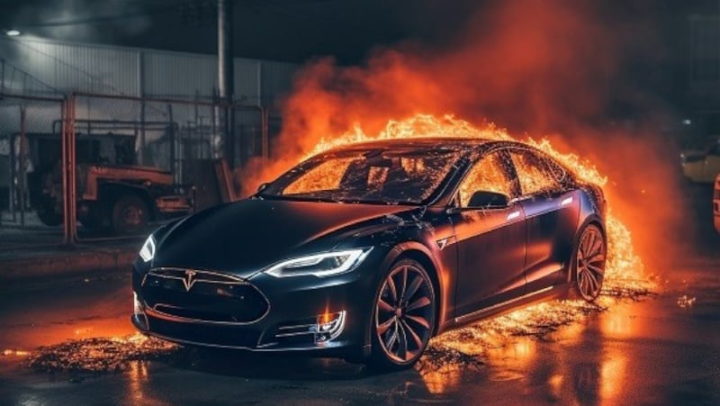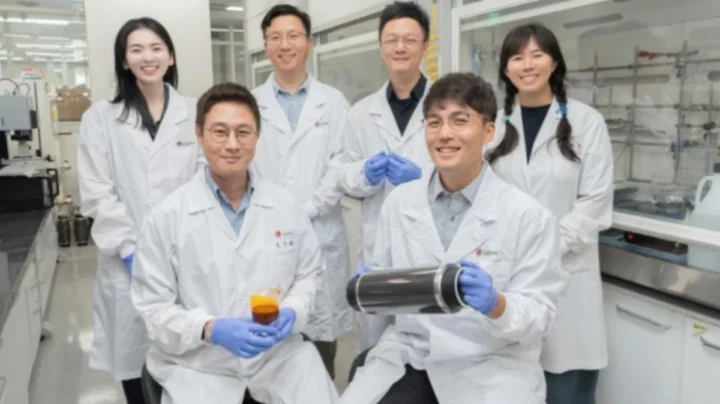LG Chem has achieved a breakthrough in battery safety, a crucial area for the future of electric mobility and sustainability. Company discovers the key to putting an end to overheating batteries and the resulting fires in electric vehicles.
Innovative material for battery safety
This development focuses on preventing the phenomenon known as thermal runaway, one of the main causes of fires in electric vehicles.
The company developed a material which responds to changes in temperature, with the ability to act as a “fuse” that interrupts the flow of electrical current when it detects overheating. The results of the investigation were published in Nature Communicationsone of the most prestigious scientific journals in the world.
LG Chem's research team, in collaboration with POSTECH's Battery Science Department, created a Safety Reinforced Layer or, in Portuguese, Safety Reinforced Layer (SRL) that responds to temperature changes, with the ability to suppress thermal runaway in batteries.
This layer is just 1 micrometer thick, which is equivalent to 1/100 the diameter of a human hair. This material, placed inside the battery cell, reacts effectively when the internal temperature exceeds the normal range, which is between 90 °C and 130 °C. When it overheats, the internal structure of the battery becomes damaged. At this point, the molecular structure of the material is changed, which interrupts the flow of current and prevents the heat from generating a dangerous reaction.
This development is particularly relevant due to the growing demand for electric vehicles and the need to ensure their safety, both for users and the environment. Battery fires have been one of the obstacles to the mass acceptance of electric vehicles, and technologies like this could make a difference.

Tram fire requires quick response
One of the most notable characteristics of the material developed by LG Chem is its ability to increase its electrical resistance by 5000 ohms (Ω) for each degree Celsius of temperature increase. The resistance can be up to 1,000 times greater compared to the resistance under normal conditions.
This allows the material to return to its original state once the battery cools downallowing the current to flow safely again.
In tests carried out on different types of batteries, such as LCO (lithium-cobalt oxide) and NCM (nickel-cobalt-manganese), the results were convincing.
A penetration test was carried out using a nail to pierce the batteries and only 16% of conventional batteries did not catch fire. In this batch, all batteries were equipped with the new safety coating. An impact test was also carried out. A 10 kg weight was dropped on the batteries, 70% of the batteries with the material developed did not catch fire, and the remaining 30% saw the flames extinguished in seconds.

Implications for sustainability and the electric vehicle market
This finding has important implications for sustainability. By improving the safety of electric vehicle batteries, it encourages the adoption of greener technologies, reducing dependence on fossil fuels and greenhouse gas emissions. Additionally, increased safety could motivate more consumers to switch to electric vehicles, accelerating the transition to cleaner transportation.
A LG Chem ensured that this material is easily applicable to mass production and has already passed safety tests on cell phone batteries. The company will continue to evaluate its effectiveness in high-capacity batteries, such as those used in electric vehicles, over the next year.
Lee Jong-gu, CTO of LG Chem, said that this achievement represents a tangible advance that could be implemented in mass production in the near future. With this technology, the company aims not only to guarantee the safety of electric vehicle users, but also to strengthen its competitiveness in the growing battery market.
The future of batteries and ecology
The development of materials like SRL can also contribute to the development of more sustainable batteries.
Current technologies face challenges in terms of durability and recyclability. However, advances in safety and efficiency, such as those achieved by LG Chem, make lithium-ion batteries safer and longer lasting, which could ultimately reduce the need for constant battery production and disposal. prolonging its life cycle and reducing its environmental impact.
As the industry moves towards electrification, solutions like those from LG Chem will be instrumental in overcoming the challenges of transitioning to a more sustainable future. Technological innovation is not only making the use of batteries safer, but also the mass adoption of clean technologies in the transport sector more viable.
LG Chem's research and development in battery safety is a milestone in the renewable energy and sustainable mobility industry. THE creating a material capable of preventing thermal runaway is a concrete answer to one of the most serious challenges in the use of lithium-ion batteries, providing a solution that benefits not only manufacturers, but also consumers and the environment.
This is a fundamental step towards a future in which electric vehicles are safer, more reliable and more environmentally friendly.
Source: pplware.sapo.pt


